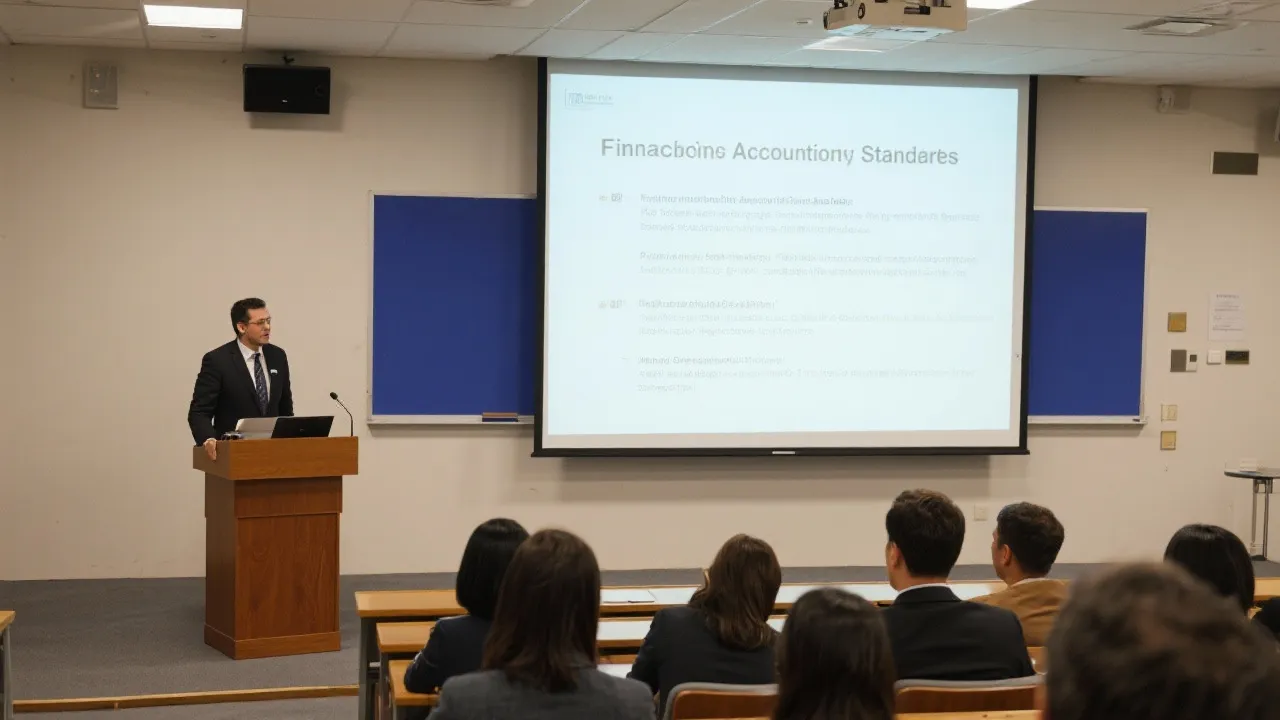Navigating the Complexities of Fas 97
This guide delves into the Financial Accounting Standard 97 (FAS 97), a framework essential for insurance companies in recognizing and reporting revenue from universal life-type insurance contracts. Introduced by the Financial Accounting Standards Board, FAS 97 emphasizes the importance of consistent and transparent financial reporting in the insurance industry, ensuring stakeholders have accurate insights into an institution's financial health.

Understanding FAS 97
Financial Accounting Standard 97 (FAS 97) is a critical accounting guideline developed by the Financial Accounting Standards Board (FASB) for the accurate financial reporting of certain insurance and annuity products, namely universal life-type insurance contracts. Its introduction has been a cornerstone in enhancing the transparency and uniformity of financial information published by insurance entities, ensuring that investors and regulators receive a clear, concise understanding of financial health and performance. Financial reporting in the insurance sector has traditionally posed unique challenges, primarily due to the intricate nature of insurance products, varying life spans of policies, and the complex interplay of premium payments, death benefits, and policyholder dividends. FAS 97 addresses these complexities by providing a regulatory framework that allows for the systematic analysis and reporting of these contracts' financial impacts.
The Core Objectives of FAS 97
FAS 97 primarily aims to bring stringent guidelines for revenue and expense recognition for specific life insurance contracts. This involves tracking and reporting the earnings pattern over the life of an insurance contract, focusing on the credible depiction of expected future contributions and costs. One of the key aspects includes the requirement for insurance companies to periodically update assumptions based on actual and expected experience, reflecting a true picture of their financial position. This includes nuanced considerations such as projecting mortality rates, lapsation rates (the probability of policyholders terminating their policies before the maturity date), and the interest rates applicable to money held within insurance products. By ensuring that financial reporting is based on realistic and applicable data, FAS 97 supports the sustainability of insurance companies in an increasingly volatile market environment.
Implementation and Challenges
Implementing FAS 97 requires a deep understanding of its technical provisions and the operational nuances of the insurance landscape. Key challenges include accurately projecting future cash flows, dealing with the variability of assumptions, and maintaining compliance with ever-evolving regulatory environments. Entities must embrace robust actuarial and accounting systems capable of handling complex calculations supporting FAS 97 objectives. The intricacies of actuarial assumptions can also become a source of contention, particularly in scenarios where experience diverges significantly from projections. Companies often need to engage specialist actuaries equipped to provide insight into historical trends, potential future scenarios, and the implications of changes in market conditions on their portfolio's overall health. Moreover, organizations must develop comprehensive training programs for finance and accounting teams, involving not just simple compliance checklists but a thorough engagement with the underlying principles of insurance economics that FAS 97 is designed to reflect.
Regulatory and Technological Considerations
In addition to implementing FAS 97, insurance firms need to be keenly aware of the broader regulatory landscape that governs the industry. This landscape is characterized by its continual evolution, as stakeholders such as state regulators and international bodies push for greater accountability and transparency. The introduction of regulations like the International Financial Reporting Standards (IFRS) and other localized standards calls for companies to remain adaptable and open to adopting new reporting practices that may align or conflict with FAS 97 guidelines. Embracing technology can play a pivotal role in navigating these complexities. Advanced analytics, automated reporting systems, and blockchain are among the technologies being harnessed by forward-thinking insurance companies to meet compliance obligations efficiently while enhancing data integrity.
Advantages of Adopting FAS 97
- Transparency: Enhanced financial reporting transparency and comparability across the insurance sector, which benefits all stakeholders by fostering trust and understanding.
- Investor Confidence: Better investor insight into the insurer's profitability and financial health, fostering trust. Increased clarity in financial statements enhances the ability of investors to make informed decisions.
- Regulatory Compliance: Ensures alignment with federal regulations, minimizing legal and compliance risks. This helps companies to avoid penalties and maintains their reputation within the industry.
- Improved Risk Management: By requiring continuous updates to projections and assumptions, FAS 97 encourages insurers to stay vigilant against changing market conditions and to proactively manage interpretations of risk.
- Strategic Decision-Making: This standard encourages insurance companies to leverage data in decision-making, focusing on sustainable growth and delivering value to stakeholders.
Use Cases: Revenue Recognition and Deferment
The application of FAS 97 to universal life contracts entails specific methodologies for recognizing both revenue and expenses. Companies must defer certain acquisition costs, which are then amortized over the policy's lifetime. For instance, recruitment and training costs for agents selling these policies can be substantial. By deferring these acquisition costs, companies avoid distorting their immediate profit margins, ensuring expenses align logically with the recognition of the associated revenue. This strategic deferral ensures the alignment of expenses with the revenue earning periods, providing a realistic view of profitability and operational costs. Such practices also adhere to the matching principle in accounting, which emphasizes that expenses should be recognized in the same period as the revenues they helped produce. As the insurance market becomes more competitive, effective implementation of these principles can position organizations favorably against their peers.
| Component | Guidelines under FAS 97 |
|---|---|
| Revenue Recognition | Depends on estimated gross profits, adjusted periodically to reflect updated assumptions and current financial conditions. |
| Expense Deferment | Acquisition costs are deferred and amortized over the life of the contract in proportion to the earned revenue, thus ensuring a smoother income statement presentation. |
| Assumption Updates | Regular updates ensure assumptions reflect current financial realities and expectations, which requires vigilant monitoring of both internal and external factors influencing life insurance demographics. |
Expert Insights: Navigating the Future
According to industry experts, embracing FAS 97 is not just about compliance — it’s about strategic financial planning. It forces organizations to focus on effective assumption management and data analytics, paving the way for precise forecasting and strategic decision-making. The changing landscape of digital finance has seen an influx in the use of predictive analytics and artificial intelligence, allowing companies to better anticipate trends and consumer behaviors that directly impact their profitability. As digital transformation reshapes finance landscapes, the integration of cutting-edge technological frameworks can streamline the substantial data processes inherent in FAS 97 adherence, driving efficiency and reducing overhead costs.
Furthermore, as organizations adapt these technologies, there is a growing emphasis on cybersecurity measures to protect sensitive financial information. The convergence of FAS 97 compliance with digital security protocols is becoming increasingly critical as insurance companies store vast amounts of data that can be vulnerable to breaches. Developing a risk management framework that encompasses both financial reporting standards and cybersecurity considerations may thus become an emerging best practice within the insurance sector.
Global Implications of FAS 97
FAS 97 also has implications beyond the confines of domestic insurance markets. With the rise of globalization, many insurance companies operate across multiple jurisdictions, making it crucial for them to ensure that their reporting standards are compatible with international frameworks like IFRS. The lack of alignment between local standards and international regulations can complicate financial consolidation and reporting processes, particularly for multinational companies that must cater to investors and regulators in various regions. Thus, as FAS 97 evolves and is potentially integrated with broader international standards, it has profound implications for cross-border insurance operations and investment strategies.
FAQs
- What is the primary aim of FAS 97?
- How does FAS 97 affect policyholders?
- Is compliance with FAS 97 mandatory?
- How often should assumptions be updated?
- What role does technology play in meeting FAS 97 requirements?
FAS 97 aims to ensure accurate financial reporting of universal life-type insurance contracts by aligning revenue recognition with cost structures over the contract term.
While FAS 97 primarily impacts insurance companies' financial reporting, it indirectly benefits policyholders by promoting transparency and encouraging sound financial health within their insurers. This ultimately contributes to the stability of their policies and the assurance that claims will be honored.
Yes, for insurance companies falling within its scope, adherence to FAS 97 is necessary to meet federal accounting standards. This also serves to align them with industry best practices and enhances their competitive edge.
Updates should be made regularly to ensure assumptions reflect current and realistic expectations, usually annually or as material changes occur. This involves a continual review process to assess the assumptions against changing demography, economic conditions, and policyholder behavior.
Technology plays a crucial role in enhancing data accuracy and efficiency in collecting, analyzing, and reporting financial information. The use of advanced analytics and software solutions can help automate compliance processes, ensuring that reporting aligns with the FAS 97 standards while mitigating risks associated with manual error.
Conclusion
FAS 97 has established a vital framework for the evaluation and reporting of universal life-type insurance contracts, pushing insurance entities towards a higher standard of accountability and precision in their financial practices. The advantages it brings, such as increased transparency, improved investor confidence, and systematic adherence to regulatory norms, cannot be overstated. Furthermore, as insurance companies strive to maintain their competitive edge in an ever-changing landscape, the principles outlined in FAS 97 will guide them in navigating the intricacies of both domestic and international financial markets. By embracing the ongoing adaptation of technology and a robust understanding of risk management, firms can leverage FAS 97 not merely as a compliance requirement but as a strategic tool for long-term growth and sustainability.









